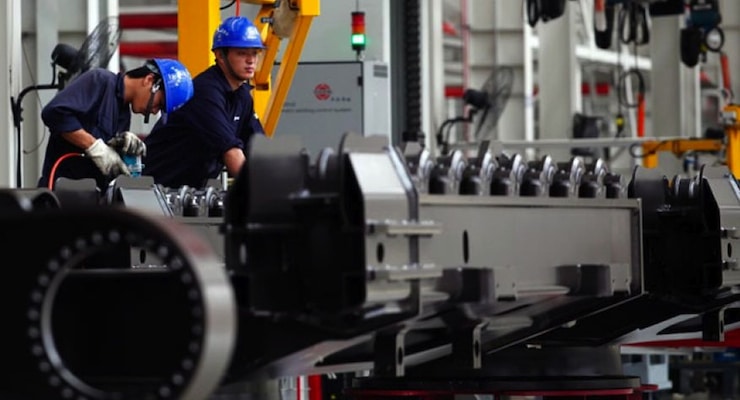

American workers at a manufacturing plant for long-lasting durable goods. (PHOTO: REUTERS)
The Commerce Department reported Wednesday that orders for long-lasting manufactured durable goods rose in July for the second straight month, beating economists’s expectations.
New orders for durable goods — products designed to last at least three years, like refrigerators and fighter jets — rose a seasonally adjusted 2% in July from a month earlier, the Commerce Department said Wednesday.
Orders for durable goods in June were revised to 4.1% juxtaposed to the initially estimated 3.4%. Economists surveyed by The Wall Street Journal had expected overall orders to rise 0.1%. However, durable goods data are volatile pieces of information and routinely undergo large, almost unbelievable revisions. Still, the manufacturing sector has struggled badly over the last 7-plus year, as regulation, mandates, and a strong dollar have made U.S. manufactured goods far more expensive for overseas buyers.
July’s increase is partly due to a gain in investment by businesses in new machinery, electronics and other goods. New orders for non-defense capital goods–excluding aircraft, which is considered a proxy for business spending on equipment and software–also rose for the second straight month. July’s rise of 2.2% was the largest gain since June 2014. June’s gains in the same category was revised up to 1.4% from a previous estimate of 0.9%.
Meanwhile, to be sure, orders in transportation predominantly fueled July’s gain, jumping 4.7% on the month. The results reflect a stronger demand for motor vehicles, as civilian aircraft orders were down 6%. Yet, the nation’s largest aircraft manufacturer, Boeing Co. (NYSE:BA) reported to have received fewer orders for planes in July than June.
Excluding the transportation sector, durable goods orders rose just 0.6%. Excluding defense, which is widely considered another volatile sector, durable goods orders rose 1%.
Through July, overall new orders of durable goods are still down 5.1% compared with the same period a year earlier. Industrial production, a measure of output in the manufacturing, utilities and mining sectors, rose a seasonally adjusted 0.6% in July, according to a Federal Reserve report released earlier this month. A survey of supply-chain executives conducted by the Institute for Supply Management found U.S. manufacturing expanded at a slower pace in July than in June.
The most damning journalistic sin committed by the media during the era of Russia collusion…
The first ecological study finds mask mandates were not effective at slowing the spread of…
On "What Are the Odds?" Monday, Robert Barnes and Rich Baris note how big tech…
On "What Are the Odds?" Monday, Robert Barnes and Rich Baris discuss why America First…
Personal income fell $1,516.6 billion (7.1%) in February, roughly the consensus forecast, while consumer spending…
Research finds those previously infected by or vaccinated against SARS-CoV-2 are not at risk of…
This website uses cookies.
View Comments
Great article